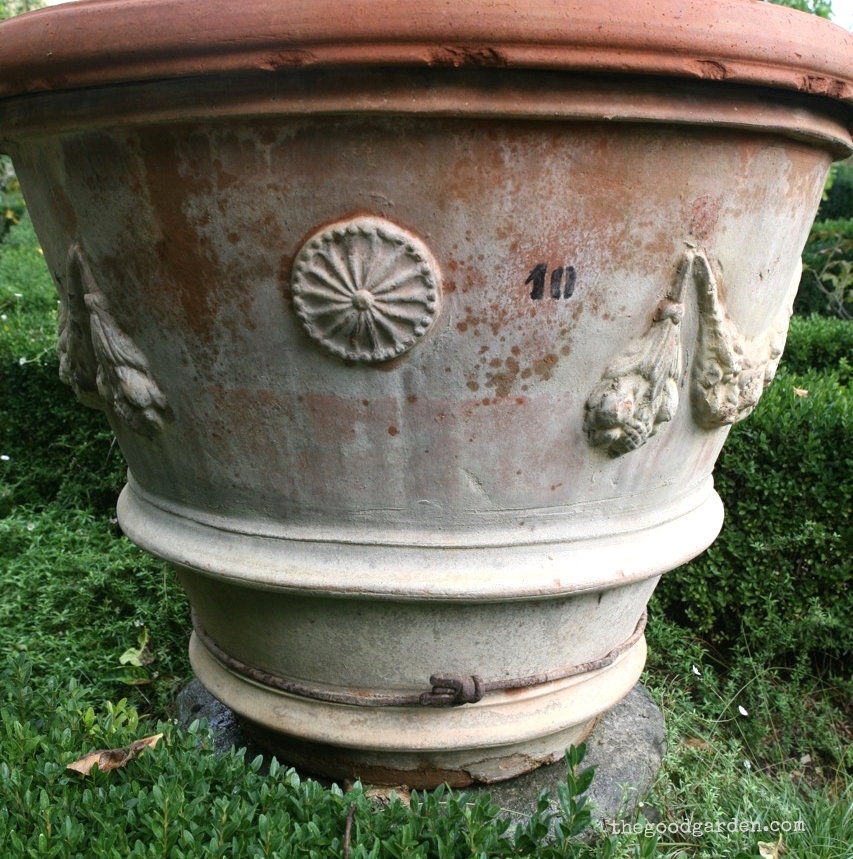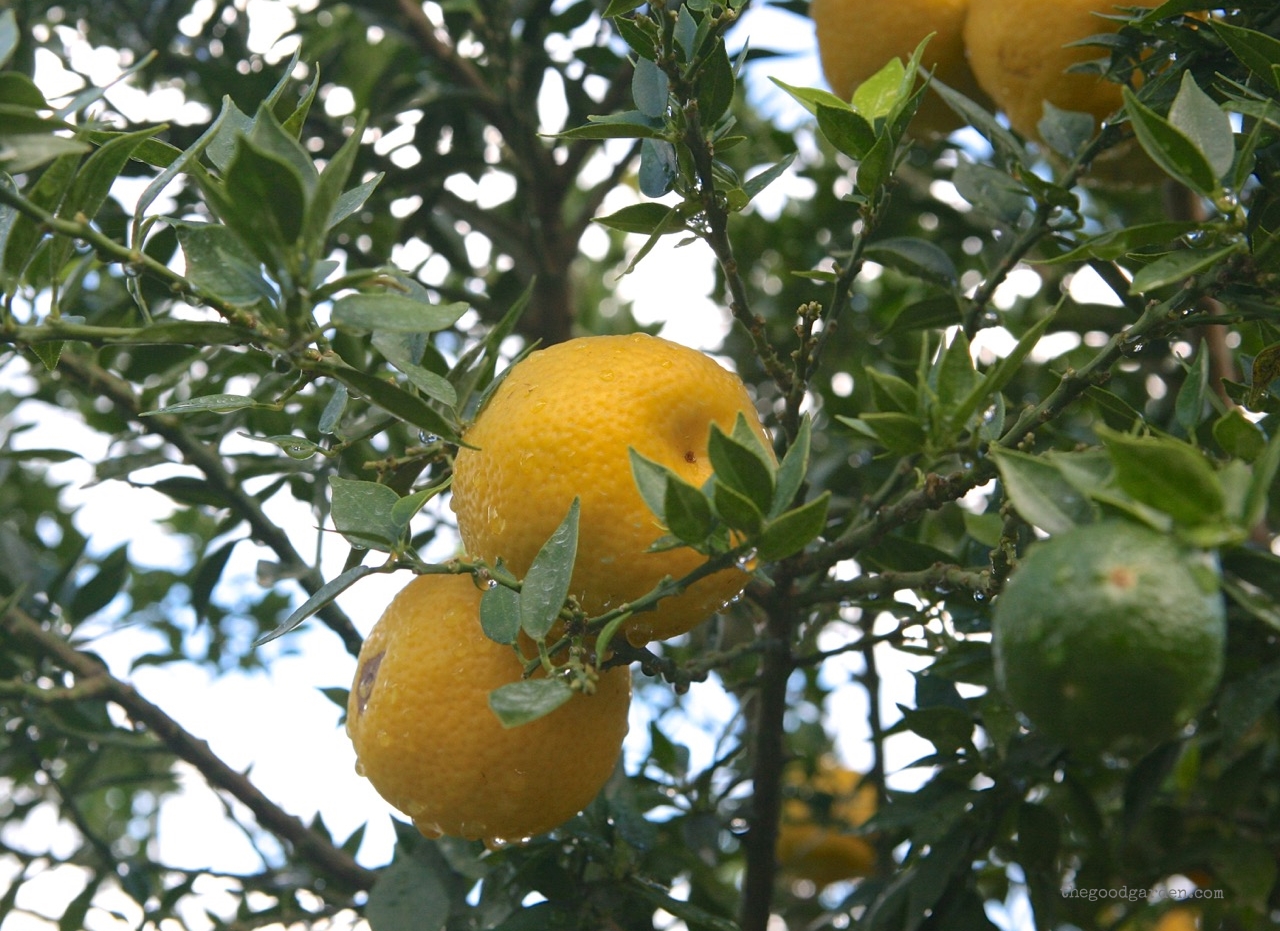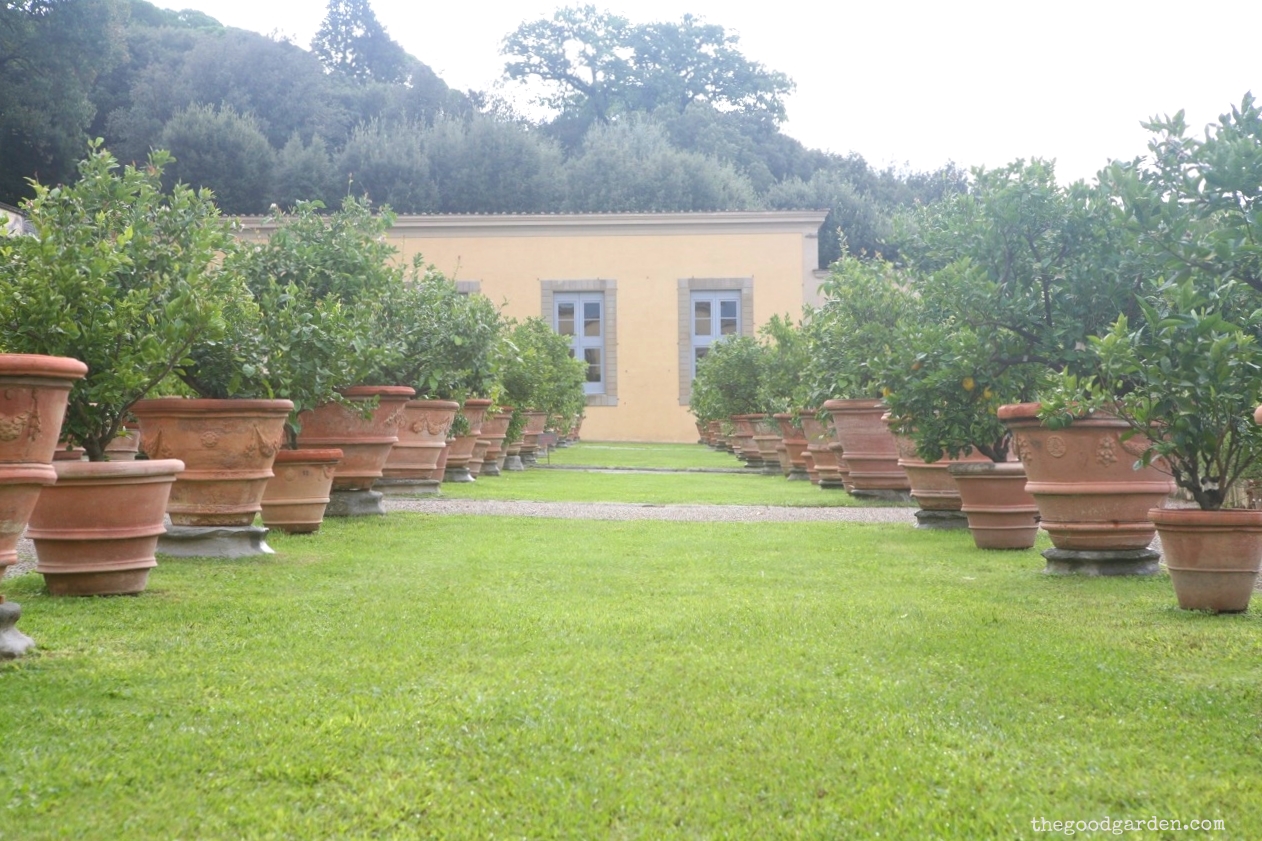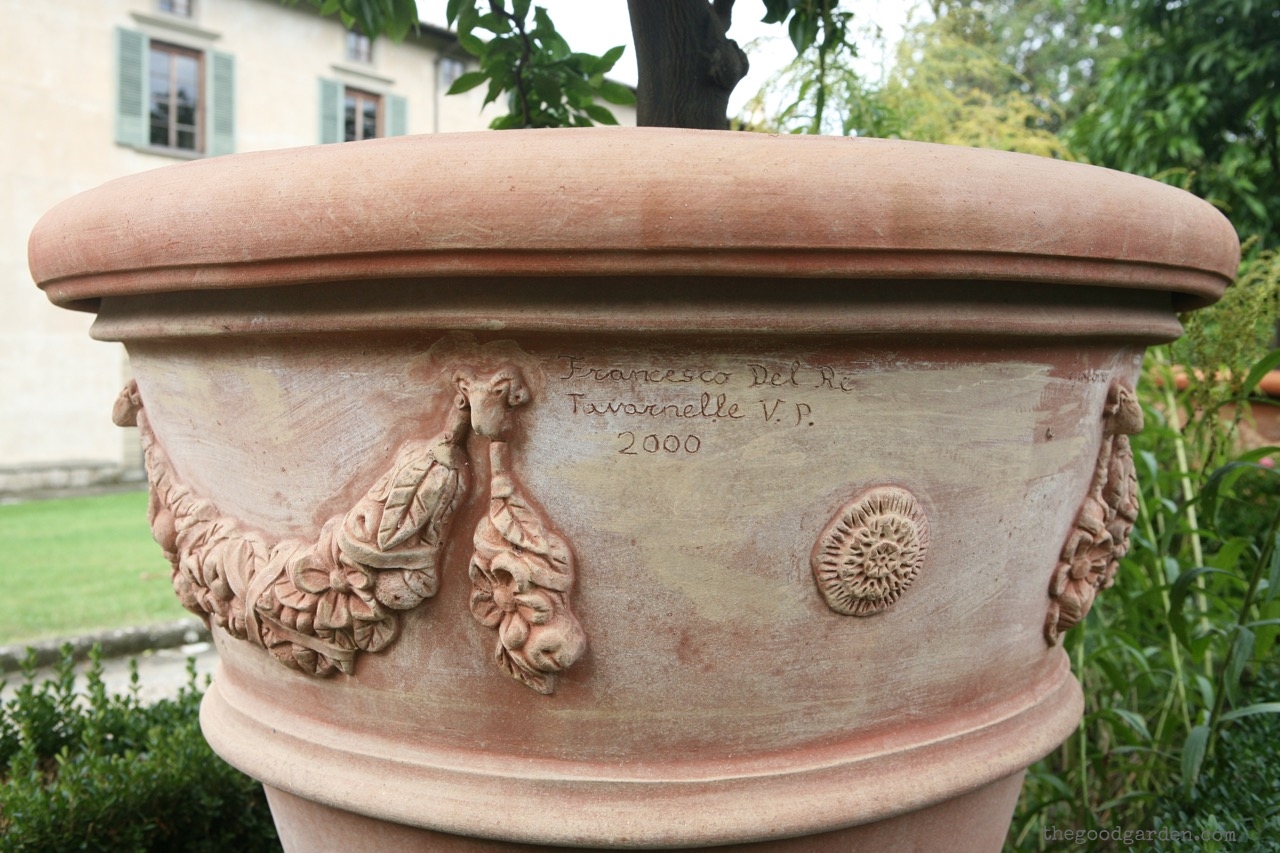I fell in love with these monumental terra cotta pots at Villa di Castello in Florence, Italy. Originally the country estate of Cosimo I de Medici, Grand Duke of Tuscany, this Italian renaissance garden includes fountains, statuary, a grotto, and a bosque. But it is these massive, earthy containers filled with citrus trees that captured my interest the most.
Each container is slightly different in age, size, and ornamentation. Some even have heavy wire bands for added strength. By using a consistent material, terra cotta, and by placing them along the gravel paths, they create a unified whole. I am especially drawn to the slight imperfections and irregularities in each container that communicate “hand made” and add to their warmth.
The garden equivalent of a navy blazer or black dress, terra cotta goes with everything. Letting the plants, and the design, shine through. In this case, they also serve a functional purpose. The trees become portable so that they can be moved into shelter when the weather gets too cold. Though I’d love to see how they move several hundreds of pounds of pot, dirt, and tree.
Terra cotta literally translates as baked earth. And nobody does terracotta like the town of Imprunetta, Italy. Terra cotta has been made in this area since the first Etruscan settlements 3,000 years ago and the first industry association for terra cotta manufacturers goes back to 1300!
Pots are made by hand using the coil method where the sides of the vessel are built up one layer at a time. Once ornamentation is applied, pots are dried and fired in a wood-burning kiln that reaches nearly 2000°F (1000°C). This gives traditional terra cotta its strength and durability.
The garden was designed in 1538 by Niccolò Tribolo who later designed Boboli Garden.
See more Italian renaissance gardens here.






